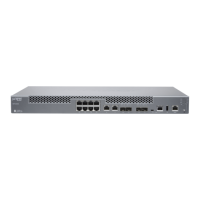for different VMs reside on different servers or hosts (a common situation). The hypervisor
manages the physical NICs and exposes only virtualized interfaces to the VNFs.
The hypervisor also runs a virtual switch environment, which allows the VNFs at the VLAN
frame layer to exchange packets inside the same box, or over a (virtual) network.
The biggest advantage of VNFs is that most applications can be easily ported to the
hypervisor environment and run well without modification.
The biggest drawback is that, often the resource-intense overhead of the guest operating
system must include a complete version of the operating system even if the function of
the entire VNF is to provide a simple service such as a domain name system (DNS).
Containers, unlike VNFs, are purpose-built to be run as independent tasks in a virtual
environment. Containers do not bundle an entire operating system inside like VNFs do.
Containers can be coded and bundled in many ways, but there are also ways to build
standard containers that are easy to maintain and extend. Standard containers are much
more open than containers created in a haphazard fashion.
Standard Linux containers define a unit of software delivery called a standard container.
Instead of encapsulating the whole guest operating system, the standard container
encapsulates only the application and any dependencies required to perform the task
the application is programmed to perform. This single runtime element can be modified,
but then the container must be rebuilt to include any additional dependencies that the
extended function might need. The overall architecture of containers in shown in
Figure 4 on page 7.
Figure 4: Containers–Overall Architecture
The containers run on the host OS kernel and not on the hypervisor. The container
architecture uses a container engine to manage the underlying platform. If you still want
to run VNFs, the container can package up a complete hypervisor and guest OS
environment as well.
Standard containers include:
•
A configuration file.
•
A set of standard operations.
•
An execution environment.
The name container is borrowed from the shipping containers that are used to transport
goods around the world. Shipping containers are standard delivery units that can be
loaded, labelled, stacked, lifted, and unloaded by equipment built specifically to handle
the containers. No matter what is inside, the container can be handled in a standard
7Copyright © 2017, Juniper Networks, Inc.
Chapter 1: Architecture Overview

